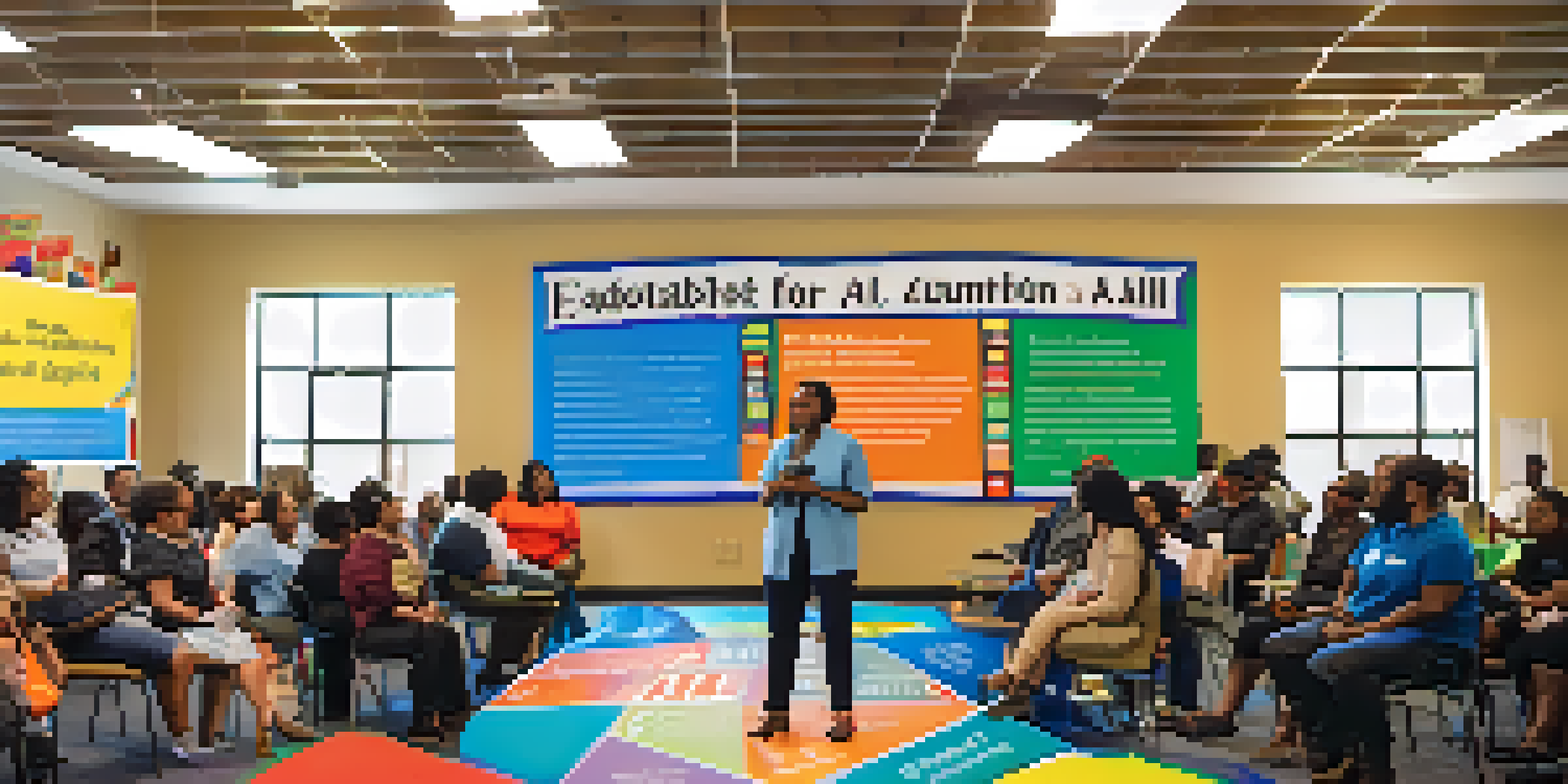Funding Challenges in Newark's Public Education System

Overview of Newark's Public Education Funding Landscape
Newark's public education system faces significant funding challenges that impact students and educators alike. With a diverse student population, the schools require adequate resources to meet varying needs, yet funding has often fallen short. Understanding how the funding system works is crucial to grasping the depth of these challenges.
Education is the most powerful weapon which you can use to change the world.
The funding for Newark’s schools primarily comes from a mix of state, local, and federal sources. However, state funding formulas can disproportionately affect urban districts like Newark, which often rely heavily on state aid. This reliance creates vulnerabilities, especially during economic downturns when state budgets tighten.
Moreover, local funding is limited due to lower property tax revenues, which means that wealthier districts can often allocate more money per student. This discrepancy in funding leads to inequalities in educational opportunities, contributing to a cycle of disadvantage that many Newark students face.
Historical Context of Education Funding in Newark
To understand the current funding challenges, it's important to look back at Newark's educational history. The city's schools have faced various reforms and funding battles over the decades, often leading to political and social unrest. These historical struggles have shaped the present-day funding landscape, creating a complex web of challenges.

In the 1990s, Newark's public schools were taken over by the state government due to poor performance and fiscal mismanagement. This move aimed to restore order and improve educational outcomes but often left local voices unheard in the decision-making process. As a result, many community members feel disconnected from the educational reforms that directly impact their children.
Funding Shortages Impact Students
Insufficient funding in Newark's public schools leads to resource gaps that hinder students' educational experiences and outcomes.
Over the years, attempts to revitalize the schools have included various funding initiatives, yet many of these measures have yielded inconsistent results. The legacy of these historical decisions continues to influence current funding models and community trust in the education system.
Impact of Funding Shortages on Student Outcomes
Funding shortages in Newark's public education system directly affect student performance and overall educational quality. When schools lack essential resources such as textbooks, technology, and extracurricular programs, students miss out on a well-rounded education. This gap can lead to lower test scores and reduced college readiness among high school graduates.
The function of education is to teach one to think intensively and to think critically. Intelligence plus character – that is the goal of true education.
Additionally, underfunded schools often struggle to attract and retain qualified teachers, further exacerbating the issue. Teachers in low-income areas may face larger class sizes and fewer support resources, which can lead to burnout and high turnover rates. This instability can disrupt student learning and negatively affect school culture.
The long-term effects of these funding shortages are significant, as they contribute to the cycle of poverty many families in Newark experience. Students who do not receive a quality education may find themselves with limited job opportunities, ultimately impacting the community's economic growth.
Community Voices: Perspectives on Education Funding
Community members in Newark have strong opinions about the funding challenges their schools face. Parents, educators, and local advocates often voice their concerns at school board meetings and community forums. These discussions highlight the need for increased transparency and accountability in how education funds are allocated.
Many community leaders emphasize the importance of equitable funding that reflects the needs of Newark's diverse student population. They argue that simply increasing overall funding is not enough; it must be distributed in a way that addresses the specific challenges faced by under-resourced schools. This call for equity resonates deeply among parents who want the best for their children.
Community Advocates for Equity
Local parents and educators are pushing for transparent and equitable funding practices that address the specific needs of Newark's diverse student population.
Moreover, grassroots organizations are emerging to tackle these issues head-on, mobilizing community members to advocate for better funding policies. Their efforts aim to raise awareness and influence decision-makers, demonstrating the power of collective action in addressing educational disparities.
Role of State and Federal Policies in Funding
State and federal policies play a crucial role in shaping the funding landscape for Newark's public schools. The way education is funded can vary greatly based on legislative priorities, economic conditions, and political will. Therefore, understanding these policies is essential for grasping the broader context of funding challenges.
Recent shifts in state funding formulas have aimed to address disparities in educational funding across districts. However, critics argue that these changes have not gone far enough to support urban districts like Newark, which continue to face significant obstacles. The debate around education funding is ongoing, and many advocates are pushing for reforms that prioritize equitable funding.
Moreover, federal education policies often influence state funding decisions. Programs like Title I, which provides financial assistance to schools with high percentages of low-income students, are vital in Newark. However, these federal funds may not always bridge the gap created by state and local funding shortfalls.
Innovative Solutions to Funding Challenges
Despite the challenges, there are innovative solutions emerging to address funding issues in Newark's public education system. Many schools are exploring partnerships with local businesses and nonprofits to secure additional resources. These collaborations can provide much-needed support for programs, technology, and extracurricular activities that enrich student learning.
Community fundraising initiatives have also gained traction, empowering parents and local organizations to take an active role in supporting their schools. By organizing events and campaigns, communities can rally together to raise funds that directly benefit students. This grassroots approach fosters a sense of ownership and pride in local schools.
Innovative Solutions Emerging
Schools in Newark are seeking innovative partnerships and community-driven initiatives to supplement funding and enhance educational resources.
Furthermore, some educators are advocating for creative funding strategies, such as grants and public-private partnerships. By tapping into various funding sources, schools can diversify their revenue streams and lessen the impact of funding shortages. These innovative approaches are promising steps toward creating a more sustainable funding model.
The Future of Newark's Public Education Funding
Looking ahead, the future of Newark's public education funding remains uncertain but hopeful. Continued advocacy from community members, educators, and policymakers is essential to ensure that funding models evolve to meet students' needs. With concerted effort, there is potential for positive change in the funding landscape.
Moreover, as the community becomes more engaged in discussions about education funding, there is a greater likelihood of seeing meaningful reforms. By amplifying local voices and incorporating their perspectives into policy decisions, Newark can work toward a more equitable education system. This collaborative approach could be the key to overcoming long-standing challenges.

Ultimately, addressing funding challenges is not just about money; it's about investing in the future of Newark's children. By prioritizing education funding, the community can pave the way for a brighter future, ensuring that every student has the opportunity to succeed.